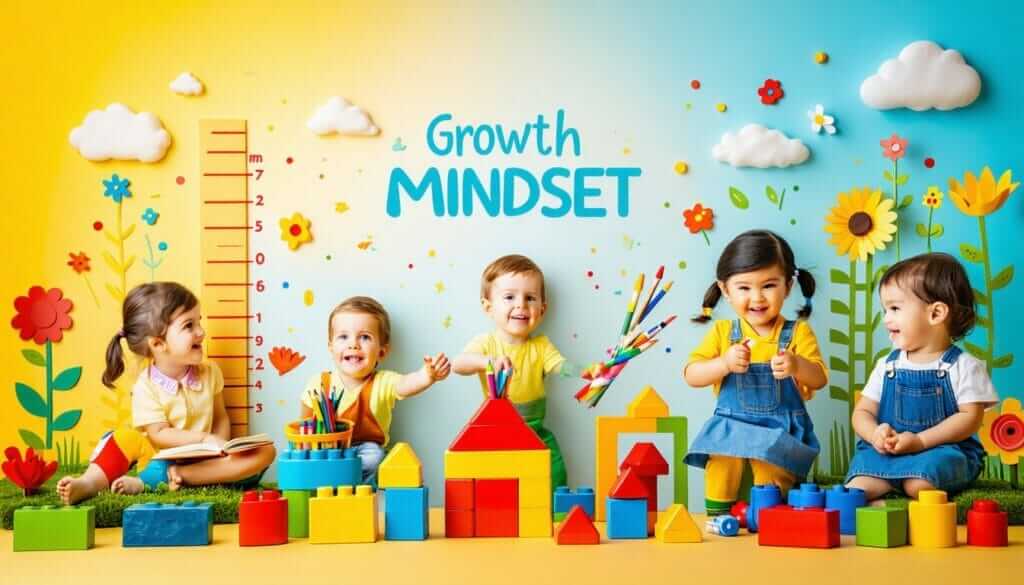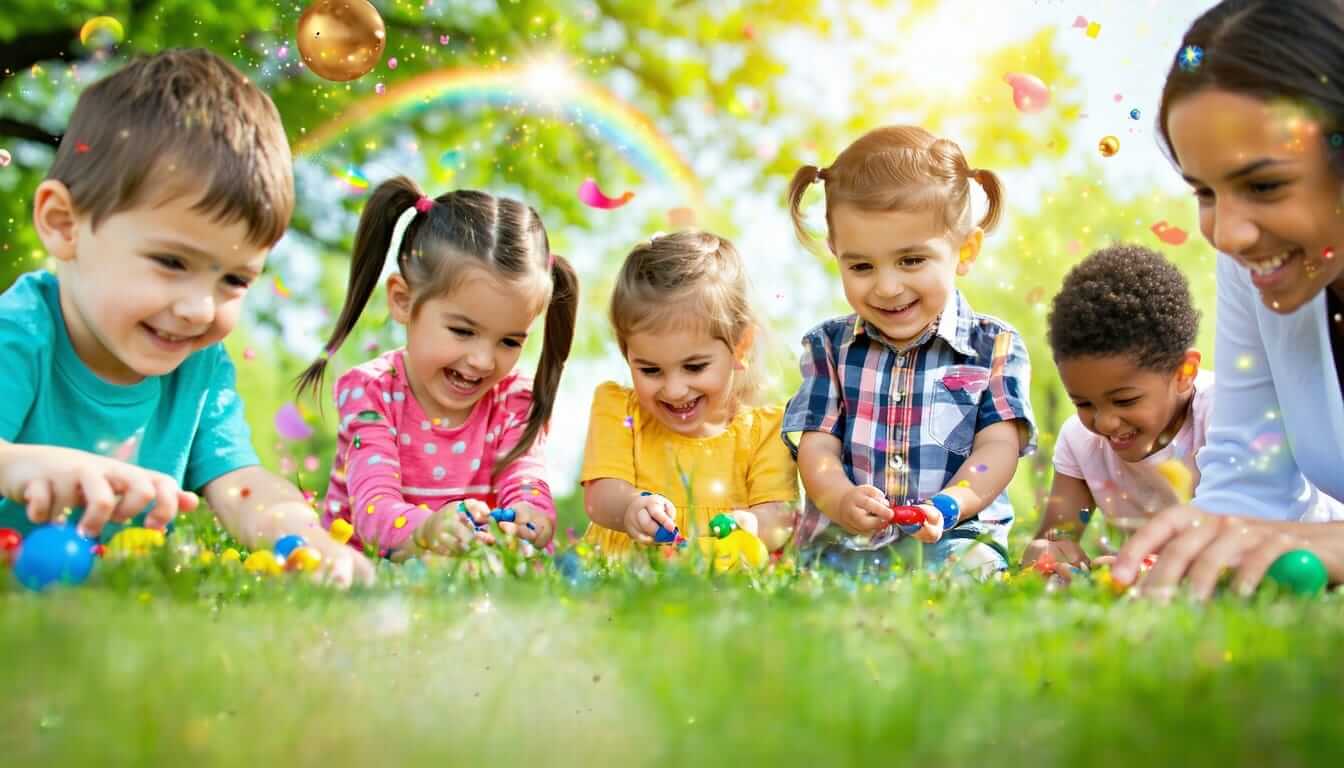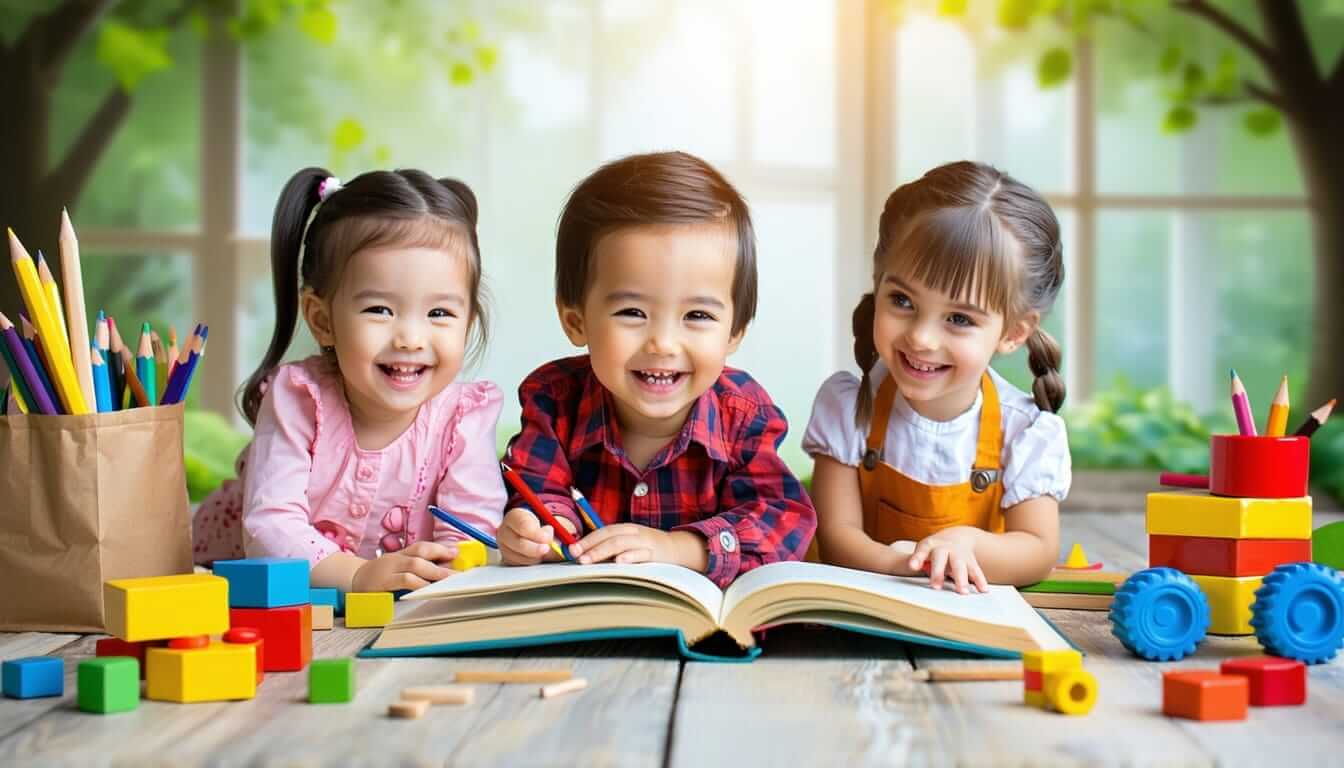Fostering a Growth Mindset in Kids
Understanding Growth Mindset
Imagine the brain as a muscle. A growth mindset is just like believing that this muscle can get stronger and learn more over time. It’s like a superpower for learning that says smarts aren’t set in stone but can be shaped through practice and effort. When you teach your kid about this idea, they learn to face challenges with courage, push through tough spots, and see slip-ups as opportunities to learn rather than failures.
Kids with a growth mindset often end up being not just happier but more successful than those who think skills are set in stone from the get-go. When you show them that hard work and dedication can make them better at anything, you’re also teaching them to love learning, and that love lasts a lifetime.
You can make these ideas stick by picking out some fun books or activities that talk about growth mindset in a way they’ll get. Encourage them to think about how they learn and get better, and you’ll see those gears start turning in no time.
The Power of Staying Positive
Keeping a sunny outlook is a big part of building a growth mindset. It helps your kid tackle challenges and handle setbacks better. Research shows kids who keep a positive attitude tend to dive into tough tasks and don’t run away from challenges. This kind of positivity helps them bounce back stronger and gives them the grit needed to tackle school and life (TherapyWorks).
When your child has a positive mindset, it boosts school performance and does wonders for their emotional health too. They learn better coping skills, feeling good about themselves and forming positive friendships. Trying out positive thinking activities for kids can lock in these good habits and keep that optimistic spirit alive.
Encouraging positivity means getting your kid to say thanks for the little things, celebrate wins big and small, and focus on what they can tweak or control. Teaching kids optimism and resilience helps them hold onto that positive streak, which, in turn, keeps them growing and thriving in all parts of life.
Building up their resilience and that “Yes I Can!” vibe lays down the blueprint for future wins and happiness.
Benefits of a Growth Mindset
Instilling a mindset that focuses on growth in kids can bring them loads of perks, especially when it comes down to school performance, bouncing back from challenges, and just plain happiness in life. By nurturing positive thinking, you’re giving your child the tools to tackle hurdles and enjoy every chance to learn.
Academic Performance
Kids with a growth mindset tend to shine in school. It’s all about praising their hard work, not just their smarts—this encourages them to go after tough stuff and hang in there when things get rough. This outlook not only boosts their eagerness to try new things but also lifts their school performance.
| Impact of Growth Mindset | Effect on School Performance |
|---|---|
| Tackling tough challenges | Achieving higher goals |
| Seeing failure as a lesson | Sticking it out longer |
| Asking for help and feedback | Sharpened problem-solving muscles |
Focusing on sticking with it and being flexible fosters a good relationship with learning. This not only spells success at school but also helps your child build the skills they need to keep learning throughout life.
Resilience and Happiness
A growth mindset ties in with being able to bounce back and just feeling good overall. Kids with this mindset often see failing as a step to growing, not as a hit to their self-worth (TherapyWorks). They’re more likely to shake off setbacks and stay hopeful when things get tough.
| Effects of Growth Mindset | Impact on Resilience & Joy |
|---|---|
| Ready to tackle obstacles | More steady emotions |
| Talking to themselves positively | Better self-esteem |
| Open to feedback | More satisfaction all around |
Studies show that kids with a growth mindset are generally happier and healthier. They build strong ways to cope, which help them keep calm and manage stress like pros. This mix of mindset and emotional health boosts feelings of personal success and happiness (Ocean Blue Strategic).
By encouraging a growth mindset in your youngster, you’re arming them with essential tools for both classroom victory and emotional strength. For more tips and tricks, check out our articles on teaching kids optimism and resiliency and building a growth mindset in youngsters.
Strategies for Encouraging Growth Mindset
Want your kiddo to thrive on life’s rollercoaster? Shaping their growth mindset is a good step towards that. Let’s explore a couple of savvy parenting tricks to help them tackle challenges head-on and see learning as one grand adventure.
Process Praise
One killer trick in your parental arsenal is “process praise.” Forget the “You’re a genius!” cliché. Instead, give a shout-out to the grit and grind they invest in getting stuff done. Recognizing effort over end results can help even a tiny tot aged 1 to 3 to grow into a growth mindset champion by age 5 (TherapyWorks).
Switch up how you give praise—try these on for size:
- Swap “You’re a natural artist!” with “I love how hard you worked on those colors in your painting!”
- Instead of “You aced it!” go for “I’m impressed with how much time you put into studying for that exam.”
By doing this, you’re teaching them that smashing grades aren’t the be-all and end-all—what really kicks butt is the grind. For more brain-boosting ideas, wander over to our list of positive thinking activities for children.
Teaching about Brain Plasticity
Next up, let’s dive into brainy stuff—brain plasticity! Yep, the noggin’s got the serious magic to grow and flex. Tell your little one that mastering anything new, from catching a ball to multiplying squares, juices up those brain connections (TherapyWorks).
Introduce brain plasticity to your kid with catchy examples:
- Say, “Each time you practice the piano, your brain gets a boost in those musical skills.”
- Or go with a classic: “Remember how you learned to skateboard? Underneath those scrapes, you were unlocking smoother moves!”
The scoop here is to help them see the brain like a gym—it gets stronger with every workout. Serve them these nuggets, and you’re helping mold a little trooper who’s psyched to polish up their skills in the face of challenges. Want to dig deeper? Peek at tips for teaching children optimism and resilience.
In blending process praise with some brain plasticity talks, you’re baking a resilient mindset into your kid that’ll help them navigate through life’s ups and downs. You’re rigging them up with the tools for growth and success, one sticky challenge at a time.
Implementing Growth Mindset at Home
Helping your child adopt a growth mindset can really shake up their view on learning and handling life’s bumps. Here are two ways to work this mindset magic in your own living room.
Learning from Mistakes
Let’s get one thing straight: mistakes are part of the game. Encourage your child to see them not as fails, but as nuggets packed with learning gold. When kids understand that mucking up is just a part of how we learn, they start building that never-give-up attitude we all admire.
| Mistakes Are Learning’s Besties |
|---|
| Everyone flubs. It’s normal! |
| Stumbling blocks sharpen smarts. |
| Kids with growth vibes crave a good challenge. |
Instead of the usual “You’re a math whiz!” when they tackle a tricky equation, try stuff like, “Look at you, trying out all those different angles to crack it!” This kind of pat on the back keeps them hustling when things get tough. Curious about swapping out the doom and gloom for some pep talk? Swing by our article on raising optimistic kiddos.
Introducing New Experiences
Shuffling them into new activities is like giving your child’s brain a grand adventure tour. From kicking about in team games to dabbling in artsy stuff, aim to emphasize effort, not just the final bow.
| What’s New? | Why Try It? |
|---|---|
| Sports and Games | Teaches group work and persistence. |
| Arts and Crafts | Let’s their inner creator roam wild. |
| Learning Sessions | Opens up new doors in the brain. |
Let them wander beyond their usual hangout spots, and you’ll see them grow more comfortable with the unknown. This is where they pick up that skill to adapt because, well, change is just part of living. Load up their bookshelf with tales of grit and new horizons to fortify their minds. Dig into our stash on big-thinking activities for kids.
By turning mistakes into lessons and weaving in fresh experiences, you’re not just building a growth mindset—you’re crafting a launchpad for your child to face the world with the gusto of “I’ve got this!
Role of Parents in Cultivating Growth Mindset
Modeling Growth Mindset
You wanna teach your kids about handling life’s curveballs? Better show ‘em how it’s done first. Kids are like little sponges, soaking up what they see. If they watch you tackle tough situations with grit and grace, they’re likely to mimic that. Don’t just cheer for wins; make a big deal out of the journey. Talk about the hiccups on the road and the clever ways you got around them. For instance, if a plan falls flat, break down what went wrong and how you plan to tackle it next time.
When you mix in positive thinking activities for children during your everyday chats, your kids’ll start seeing the bright side more often. Use phrases like, “This is tough, but let’s give it a shot” or “Mistakes show we’re trying new things.” This way, you turn challenges into growth adventures, creating a safe zone where taking risks and messing up is just part of the learning process.
Encouraging Positive Self-Talk
Getting your kiddo to talk to themselves in a kinder way—that’s a game-changer for building a strong mindset. Help them switch up their internal script from “I can’t do this” to “I’m not there yet, but I’m learning and will crack it eventually.” This little mental shift shows that putting in work and time leads to getting better.
Peep some strategies in our post on promoting positive self-talk in children. Regular play with these notions can totally boost your kid’s self-worth and bravery. When kids learn to manage their inner chatter, they’re more willing to face daunting tasks head-on, charging into challenges rather than skirting ‘em.
Here’s a handy table for spotting the good versus the gloom:
| Negative Self-Talk | Positive Self-Talk |
|---|---|
| I always fail at this. | I will get the hang of this. |
| I’m not good enough. | I’m improving every day. |
| This is too hard. | Bring it on—I got this. |
By showing them the ropes and promoting upbeat self-talk, you’re setting up your kid for victories in different areas—from acing math tests to making new friends. All these add up to growing a growth mindset in your little one, fueling them with resilience and love for learning.
Tools and Resources for Growth Mindset
Getting your kids to think positively and embrace challenges takes some creativity and the right bag of tricks. So here’s your treasure map to inspiring that “Yes I Can!” attitude using books and some good old-fashioned positivity.
Books Emphasizing Perseverance
Books are like magic keys that teach kids about sticking it out and bouncing back. Check out these gems:
| Book Title | Author | Discovery |
|---|---|---|
| The Most Magnificent Thing | Ashley Spires | A little girl tackles projects, hits bumps, and learns success is just a challenge away. |
| Giraffes Can’t Dance | Giles Andreae | Follow along with a dancing giraffe who finds joy in his own groove. |
| Your Fantastic Elastic Brain | JoAnn Deak | Dive into brainy adventures and learn how elastic our brains are. |
| What Do You Do With a Problem? | Kobi Yamada | Discover how every problem is actually a stepping stone to greatness. |
Reading together gives a chance to chat about hiccups and hurrahs. Feel free to explore related topics like teaching optimism and resilience and fostering positive vibes in child growth through the enchanting world of stories.
Positive Reinforcement Strategies
Positive reinforcement’s a superstar in nurturing a growth mindset. It’s about acknowledging effort, not just A+ scores, fueling curiosity, and passion for learning:
-
Process Praise: Swap “You’re so smart” with “I love how much effort you put into that puzzle.” This highlights dedication and grit (Sparkle Stories).
-
Reflect on Mistakes: Turn your home into a safe space where mistakes are seen as golden learning moments. Chat about what oops moments taught us. Mistakes are just stepping stones in disguise.
-
Introduce New Experiences: Encourage your child to dip their toes into activities that push the boundaries. Trying new things can boost their confidence and fearless nature (Sparkle Stories).
-
Share Personal Experiences: Have an honest chat about times when you’ve hit a wall but found a way around it. Show your little ones that if mom, dad, or any adult can do it, so can they (Positive Psychology).
With these little boosts, you’re setting your kiddo up for a lifetime of positive thinking. This way, they’ll not only rock their report cards but also grow into resilient, all-star humans. For more inspired ideas, check out positive thinking stuff for kids and the big role a positive outlook plays in growing up.




